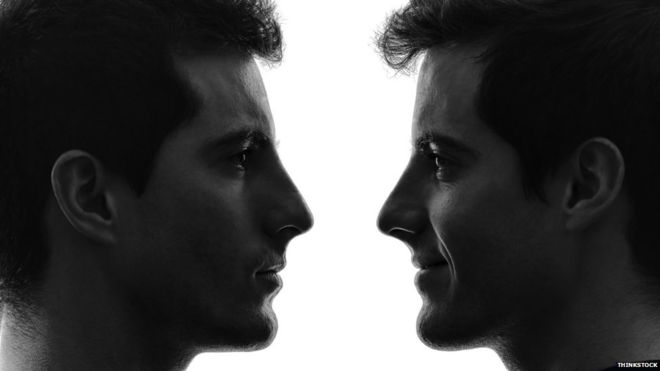
In today’s age of “scientific” psychology, it is not at all difficult to find those who are skeptical or dismissive of Jung’s work. This skepticism may leave students of typology feeling a bit marginalized and disconnected from mainstream intellectual discourse. As a sort of push back against this skepticism, this post will outline a concise argument for personality types, one which might also serve as a starting point for Jungian theorists.
Here’s the basic argument:
1. The human mind employs different functions, including logic (T), affect / feeling (F), sense perception (S), and intuition (N).
2. We are inclined to consistently prefer and utilize certain functions more than others.
3. Individuals can be objectively grouped according to their preferred functions. We refer to these function groups as personality types.
Point-by-point analyses:
1. The human mind employs different functions, including logic (T), affect / feeling (F), sense perception (S), and intuition (N).
While there may be some disagreement over the details, many psychologists and philosophers would grant these basic features of mind, with the nature of intuition being the most controversial. Even those who opt for different terminology (e.g., emotions rather than feeling) are often referencing these same essential functions or one of their subcomponents.
In the first half of his classic work, Psychological Types, Jung offers numerous examples of how the above functions routinely populate and animate works of literature, religion, poetry, philosophy, etc. Another important work in this respect is Thomas King’s book, Jung’s Four and Some Philosophers, which details the role of the functions in the life and work of 10 famous philosophers. Jung and King deliver an impressive case for T, F, S, and N as the most salient and consequential functions of the human psyche. While one could of course argue for a different set of essential functions, doing so would not undermine the overall argument for types but would only cast doubt on the Jungian model in particular.
2. We are inclined to consistently prefer and utilize certain functions more than others.
There is a long-standing debate among psychologists regarding the reality of enduring personality traits versus transient psychological states (i.e., “traits vs. states”) prompted by ever-changing life circumstances. Nevertheless, there is sufficient empirical support to have convinced many psychologists of the reality of enduring personality traits, such as those outlined in “The Big Five” personality taxonomy. According to the renown personality researcher C.G. DeYoung:
Personality traits are probabilistic descriptions of relatively stable patterns of emotion, motivation, cognition, and behavior.
As DeYoung points out, personality traits are enduring psychological patterns. What Jung and Myers-Briggs referred to as personality “preferences” fits nicely with DeYoung’s understanding of traits, namely, our tendency to prefer and utilize certain types of emotional, motivation, cognitive, and behavioral patterns over others. Jung referred to these patterns as psychological “functions,” which we touched on in the previous section.
3. Individuals can be objectively grouped according to their preferred functions. We refer to these functions groups as personality “types.”
Having already made the case for the basic psychological functions, as well as our propensity to prefer and utilize certain functions, the door is now sufficiently open to posit the existence of personality “types.” Namely, once we identify an individual’s preferred psychological patterns / function(s), she can then be grouped with others exhibiting similar preferences. This group can then be described in terms of a personality type (e.g., INTP).
Conclusion
In light of the above, we can conclude that the notion of personality types is neither an illogical nor a baseless proposition. While this post was intended mainly as an argument for personality types in general rather than the Jungian / Myers-Briggs model in particular, Jungian typology remains compelling for a number of reasons. Not only is it attractive from a philosophical and depth psychology standpoint, but as I’ve discussed elsewhere, it exhibits substantial empirical and conceptual overlap with the leading academic personality model, The Big Five.
Learn More about the Personality Types in Our books:
My True Type: Clarifying Your Personality Type, Preferences & Functions
The 16 Personality Types: Profiles, Theory & Type Development
Related Posts
Beyond Scientific: The Case for Jungian Typology
Big Five Openness, Myers-Briggs Intuition, & IQ Correlations
References
- Jung, CG. Psychological Types. Princeton University Press. 1971.
- King, TM. Jung’s Four and Some Philosophers. University of Notre Dame Press. 1999.
- DeYoung, CG. Cybernetic Big Five Theory. Journal of Research in Personality. 56 (2015) 33–58.